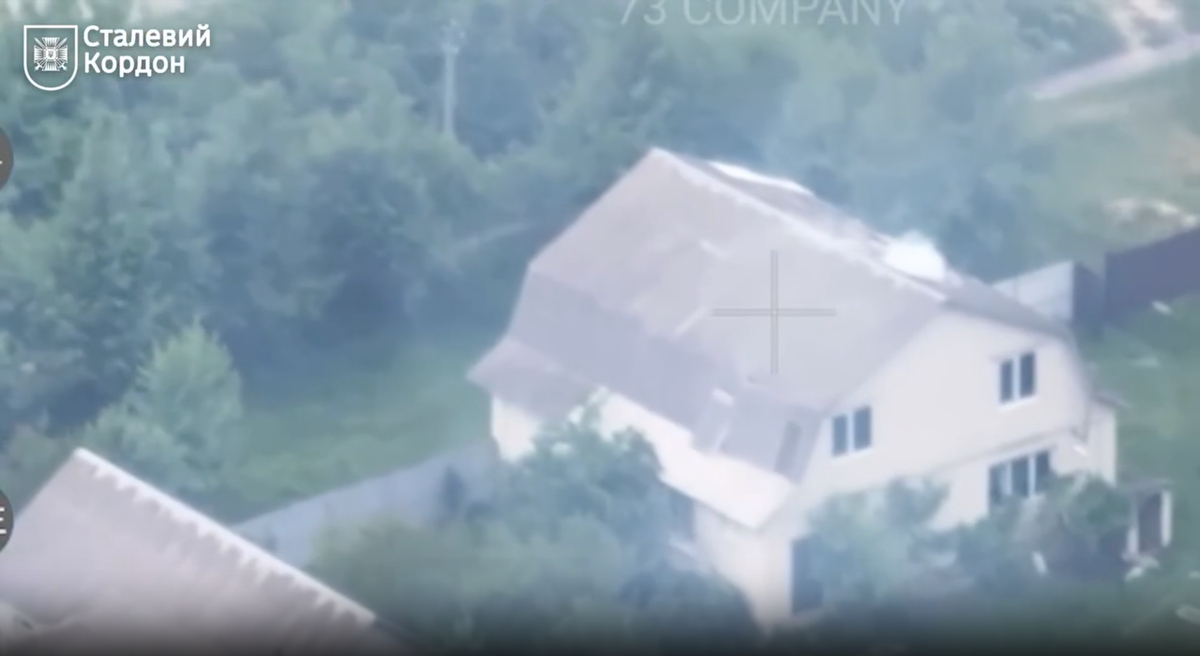The Russian military has resorted to new methods of concealing drone operations, constructing holes in the roofs of civilian buildings through which to launch UAVs, according to the Ukrainian Armed Forces.
The 15th Mobile Border Detachment “Steel Border” reported on Facebook that, Kremlin troops have modified civilian rooftops in Russian border settlements to serve as launch and landing points for drones – an apparent attempt to avoid detection.
Follow our coverage of the war on the @Kyivpost_official.
“Steel Border scouts managed to detect several of these launch positions and destroyed them using UAVs,” the report said.
A video shared by the unit – whose location and time Kyiv Post could not independently verify – shows Ukrainian FPV drones striking the concealed sites. The footage appears to confirm the destruction of equipment and possibly along with drone operators.
Interestingly, on Tuesday, Ukraine’s Security Service (SBU) head Vasyl Malyuk revealed similar tactics were used in the Spiderweb operation, which targeted Russian strategic bombers.
According to Malyuk, the SBU transported FPV drones into Russia hidden in mobile wooden houses fitted with remotely opening roofs. Once in place, the drones were launched through the opened roofs to strike their targets which included Russian heavy bombers.

Other Topics of Interest
Some Reflection on Ukraine’s Future
Assuming a joint Ukrainian-European winning conclusion to the war in Ukraine, Ukraine’s future appears bright, precisely because of its next generation.
Ukraine’s Operation Spiderweb – a long-planned drone strike on five airbases deep inside Russia – was hailed as a major success by President Volodymyr Zelensky and SBU head Lt. Gen. Vasyl Malyuk.
AI-enhanced kamikaze drones, smuggled into Russia and launched from cargo trucks, hit bases in Murmansk, Ivanovo, Ryazan, Irkutsk, and Amur, catching Russian defenses off guard.
Kyiv initially claimed that over 40 strategic aircraft were destroyed or damaged, including Tu-95s, Tu-22s, and an A-50, with estimated losses reaching up to $7 billion. However, Russian sources and analysts quickly disputed those figures. OSINT expert John Helin suggested only about 10 bombers were destroyed, citing limited satellite evidence.
A June 2 update from Ukraine’s National Security and Defense Council confirmed 13 aircraft were fully destroyed, with more than 40 damaged. The UK’s Daily Telegraph corroborated at least eight Tu-95s and four Tu-22s destroyed.
Spiderweb followed rail and bridge sabotage in Bryansk, Kursk, and Zaporizhzhia, and was timed just ahead of peace talks in Istanbul on the anniversary of Ukraine’s final nuclear disarmament under the Budapest Memorandum.
Beyond the damage, the operation underscored Ukraine’s long-range strike capabilities and brought the war home to previously untouched parts of Russia.
